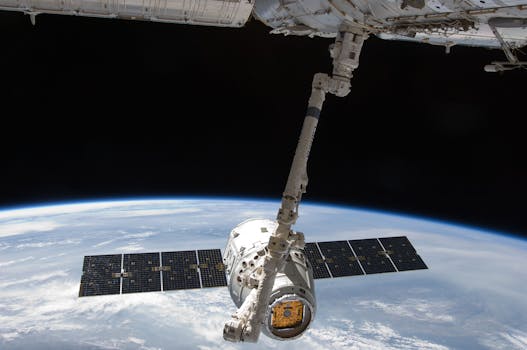
The New Frontier: Exploring the Latest Trends in Satellite Communication is an exciting and rapidly evolving field, with new advancements and innovations emerging every year. Satellite communication has become an essential part of our daily lives, from enabling global connectivity to facilitating international trade and commerce. In this article, we will delve into the latest trends in satellite communication, exploring the new frontier of space-based technologies and their applications.
Satellite communication has come a long way since its inception, with significant improvements in technology, infrastructure, and services. One of the major trends in satellite communication is the increasing use of high-throughput satellites (HTS), which offer higher bandwidth and faster data transfer rates. HTS have enabled the widespread adoption of satellite-based broadband services, providing internet access to remote and underserved communities. For instance, the Intelsat EpicNG platform and the Viasat Ka-band satellite system are examples of HTS that have revolutionized the satellite communication industry.
Another significant trend in satellite communication is the growing demand for satellite-based IoT (Internet of Things) services. With the increasing number of connected devices, satellite-based IoT services are becoming essential for various industries, such as logistics, transportation, and agriculture. Satellite-based IoT services enable real-time monitoring and tracking, remote asset management, and predictive maintenance, among other applications. Companies like Orbcomm and Globalstar are leading the way in providing satellite-based IoT services.
The use of satellite communication for 5G and 6G networks is also gaining traction. Satellite-based 5G and 6G services offer several benefits, including extended coverage, improved capacity, and enhanced security. Satellite-based 5G and 6G services can provide connectivity in areas where traditional terrestrial networks are limited or non-existent, such as in remote or hard-to-reach areas. Furthermore, satellite-based 5G and 6G services can offer lower latency and higher throughput, making them ideal for applications like online gaming, virtual reality, and autonomous vehicles.
In addition to these trends, there is a growing focus on satellite communication security. As satellite communication becomes increasingly critical to global connectivity and commerce, the need for robust security measures has become more pressing. Satellite communication security threats include jamming, spoofing, and hacking, which can have serious consequences, such as disrupting communication services, compromising sensitive information, and even posing a risk to national security. To address these threats, satellite communication companies are implementing various security measures, such as encryption, authentication, and intrusion detection and prevention systems.
Finally, the use of satellite communication for Earth observation and remote sensing is another significant trend. Satellite-based Earth observation and remote sensing enable the monitoring of environmental changes, such as deforestation, ocean pollution, and climate change. Satellite-based Earth observation and remote sensing also facilitate disaster response and recovery, by providing critical information on damaged areas and affected populations. Companies like Planet Labs and DigitalGlobe are leading the way in providing satellite-based Earth observation and remote sensing services.
In conclusion, the latest trends in satellite communication are transforming the way we communicate, navigate, and understand our world. From improved connectivity to enhanced security, satellite communication is playing an increasingly critical role in various industries and aspects of our lives. As we continue to push the boundaries of space-based technologies, we can expect even more exciting innovations and applications to emerge in the future.






